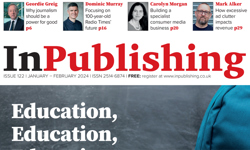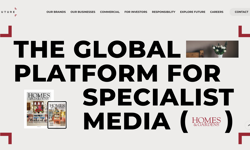Perhaps some seem a bit obvious, but our experience suggests that the copy can come a long way behind the surface glamour of HTML design.
1. People buy benefits
Remember that what’s always been true for offline sales copy applies online too: what really sells your product or service is its benefits.
You need to explain what your product’s features will really deliver. What difference will it make to someone’s business, team or job? Potential buyers need to know how they will get value from buying your product or service.
2. To understand an offer you need to know the original price
Offers are a great way to get people to buy, although the risk is that, without further offers, a buyer’s relationship with you ends when the offer expires. But offers need to be understandable.
Never be embarrassed about the full price of your product or service, and make sure you mention it.
Your potential customers can’t tell if an offer is great or just packaging unless they know the original price. And if there’s more than one way to describe your offer (half price, pay just 50%, save £40) then try them out – explaining your offer in different ways might just add a few extra sales.
Offers need a clear closing date too – not just for accounting reasons. Close dates impart urgency to subscribe, not sometime but “NOW, before this offer ends”.
3. People buy from people, not “teams”
I’m guessing you have some real people in your sales team. So your emails should come from them, by name, with their contact details. Then they can say, “Contact me”.
Better still, send emails from the editor, the owner or the managing director, who should have every reason to wax lyrical about their product or service.
Emails from “The Sales Team” suggest there is no-one responsible for this product, or that staff turnover is so fast or customer complaints so frequent they don’t dare put their name.
4. Negatives shout “don’t do it”
Avoid the word “don’t”. Prefer “Remember” and “Act now” to “Don’t forget” and “Don’t delay”.
5. If you’re using quotes and samples, do it from your own product, service or publication
A recent batch of emails I reviewed quoted extensively from another publication in the same marketplace.
Using industry experts to explain the relevance of your product or service is an excellent idea. But promoting competitors, however accidentally, can only suggest they know more about the market than you do.
6. Spell check and grammar check – with real people as well as software
It’s obvious but necessary. Sometimes Microsoft can’t pick up simple errors.
Potential customers may feel that “if they can’t be bothered to check their own sales emails, their stuff can’t be up to much either”.
7. Most “unique” things are anything but
Unique is a popular word amongst marketing executives who don’t understand the true benefits of what they are selling.
Define what is unique about your product and write about that.
8. People buy from people … part 2
A real customer testimonial – with job title and company for business services, or a location for consumer products – is one of the best ways to convince your potential purchasers to part with their money.
Reviews from famous consumers or industry experts will also help to convince waverers to buy.
9. Guarantees are great – if your customers can find them
A money back guarantee is great – be proud of it and show it off, rather than hiding it. Make it stand out and show how confident you are in what you’re selling.
10. Keep your sentences and paragraphs ultra-short
Emails full of long wordy sentences and blocky paragraphs are hard to read. Keep them short, punchy and well spaced.
If you want a guideline, I would say stick to an average of 12 words per sentence and four-line (max) paragraphs.
And I’m telling you this because
Emails are a great way to get your sales message out to huge numbers of people for very little cost. But you still need to focus on the fundamental copywriting truths.
People buy benefits, offers work, and your style has to be ultra-tight – just like the best sales letters in pre-digital days.










